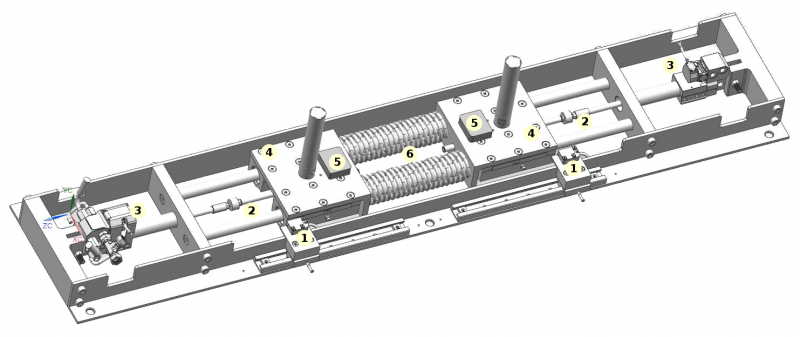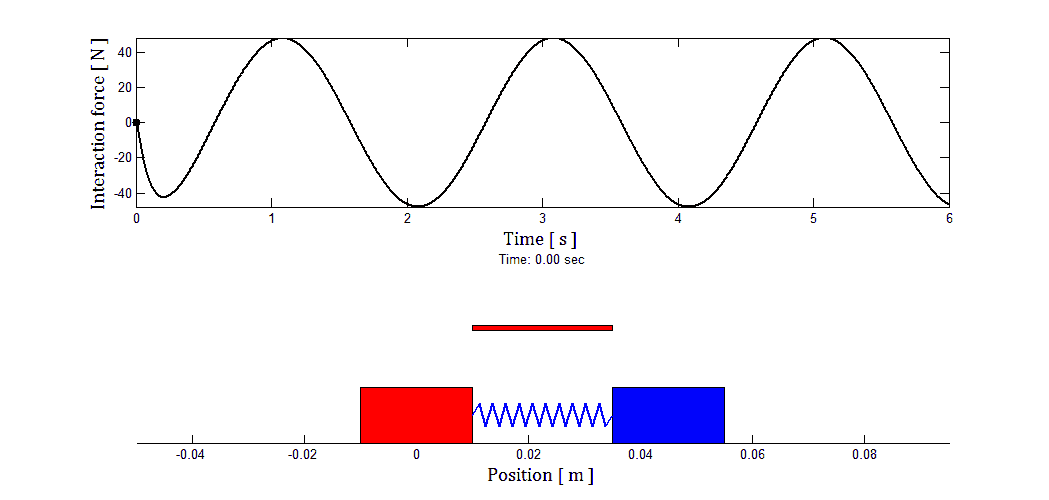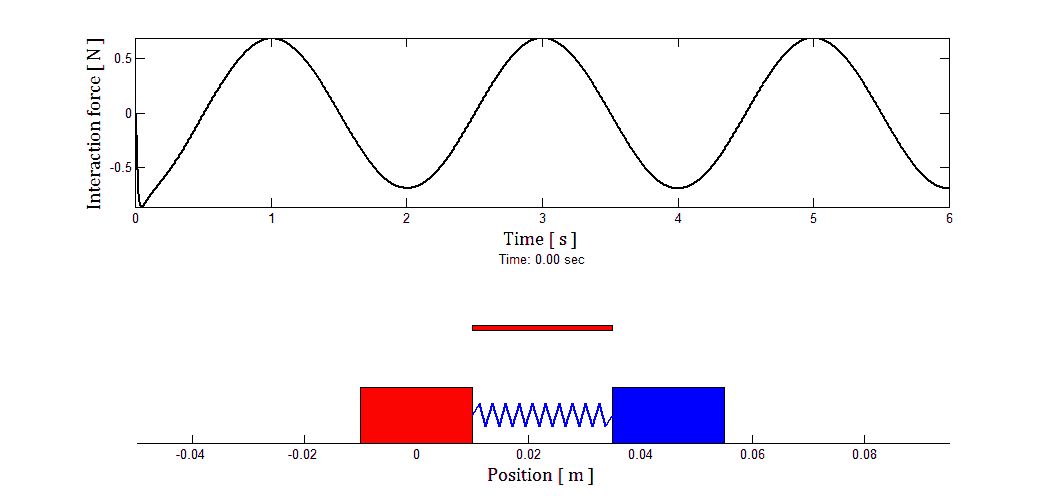Sidebar
<latex>{\fontsize{16pt}\selectfont \textbf{Transparency Control For Wearable Robots}} </latex>
<latex>{\fontsize{12pt}\selectfont \textbf{Dennis Mannhart}} </latex>
<latex>{\fontsize{10pt}\selectfont \textit{Semester Project, ME}} </latex>
<latex> {\fontsize{12pt}\selectfont \textbf{Abstract} </latex>
Wearable robots such as exoskeletons become an increased area of interest
due to their powerful ability to interact with human beings directly.
This interaction, however, raises new challenges to the control designer
because the controlled system has to be fully compliant to the user
to assure safety and comfort for the human. This work presents a simple
hardware setup to test new transparency control algorithms with the
objective to improve the human-robot interface. Force feedback control
in combination with acceleration feedback control and feed-forward
control is suggested as a new transparency control algorithm approach.
Simulation results show that indeed there is a clear improvement with
this new control strategy over simple force feedback control and feed-forward
control. Future experiments on the new setup will then be used to
evaluate the performance of this new control strategy in comparison
to other transparency control algorithms.
<latex> {\fontsize{12pt}\selectfont \textbf{Hardware} </latex>
The new setup is called FC2D (force control in two degrees), which contains two carts connected by two
springs . Each cart itself can be controlled by a hydraulic actuator
through a shaft that is equipped with a force sensor. Moreover, the dynamics of each cart is captured through a linear position encoder and two IMUs (inertial measurement unit).

| Number | Part | |
|---|---|---|
| 1 | Position sensor | |
| 2 | Force sensor | |
| 3 | Hydraulic actuator | |
| 4 | Cart | |
| 5 | Acceleration sensor | |
| 6 | Spring |
The mechanism of FC2D to test transparency control works as follow:
one of the carts is chosen to emulate the human. This cart is then
moved according to a desired periodic trajectory. The other cart represents
the wearable robot that is attached to the reference cart and is controlled in a transparent way to keep the interaction
force low.
The settings of FC2D can be modified by either increasing the weights
on top of each cart or changing the spring set. Currently, there are
two spring sets available with spring constant of $2.373\frac{N}{mm}$ and $6.203\frac{N}{mm}$
respectively. The springs are custom-built from Spiral AG to
allow compression and tension for the full range of the cylinder stroke
($80mm$).In addition to mechanical modification on the setup, FC2D also allows
to test transparency control algorithms under different interface
characteristics by incorporating damping characteristics in the control
algorithm itself.
<latex> {\fontsize{12pt}\selectfont \textbf{Transparency control} </latex>
Transparency control is a sub-field of interaction control with the
goal to control the wearable robot in such a way that the
human does not feel any interaction forces due to the robot. This thesis focus on
force feedback, acceleration feedback and feed-forward control as possible transparency control schemes.
Force feedback control refers to the control algorithm that feeds
back the interaction force to the robot's controller. Hence, the corresponding
control law is
\begin{equation*} u_{f}=g\left(f_{d}-f_{i}\right) \end{equation*}
where $u_{f}$ is the control input to the robot's actuator, $f_{d}$
and $f_{i}$ are desired and actual interaction force/torque respectively
and $g$ refers to a control operator (e.g. PID controller). In the
case of transparency controllers, $f_{d}$ is set to $0$.
In the context of interaction force
control, feed-forward control is an open loop control that uses knowledge
of the human dynamics for the control input.The feed-forward control was chosen to be an approximation of the spring
force multiplied by a gain. The feed-forward control $F_{ff}$ is simply
\begin{equation*} F_{ff}=F_{f}(x_{h,new}-x_{h,old}) \end{equation*}
where $x_{h,new}$ is the position of the human at the most current
time step, $x_{h,old}$ the position of the human from a previous
time step and $F_{f}$ the feed-forward gain.
Finally, the idea of acceleration feedback
control is to take the human's acceleration as reference input and
the acceleration of the wearable robot as the deviation from the reference:
\begin{equation*} u_{a}=h(\ddot{x}_{h}-\ddot{x}_{r}) \end{equation*}
$u_{a}$ refers to the control input to the actuator, $h$ is an operator
(e.g. PID controller), $\ddot{x_{h}}$ and $\ddot{x_{r}}$ are the
acceleration of the human and wearable robot respectively.
<latex> {\fontsize{12pt}\selectfont \textbf{Simulation Results} </latex>
The performance of force feedback control in combination with feed-forward control and acceleration feedback control was tested where the hydraulic actuators and the plant were modeled with
Simcape and the controllers with Simulink. The reference cart was controlled along a sinusoidal function with $0.03m$ amplitude and frequency of $\pi\frac{rad}{s}$. The results were then compared to the performance of force feedback control with and without feed-forward control.
Even though any cart can be chosen to represent the reference cart or the wearable robot cart, in the simulation and the preliminary tests on the actual system, the left cart was chosen to be the reference cart (human) and the right cart the tracking cart (wearable robot) with interaction force due to the spring connection. The simulation starts with zero interaction force, velocity and acceleration where the zero position was defined as the initial state of the reference cart with positive direction to the right. The interaction force acting on the reference cart was defined to be positive if the force was pointing towards the wearable robot.
| Animation 1: Force feedback control with feed-forward |
|---|

Animation 1 shows the interaction force when the wearable robot (blue cart) is controlled with a simple force feedback and feed-forward controller. The red bar above the carts position animation represents the length of the spring at equilibrium. With this transparency controller, the interaction force peaks at a magnitude of about $48N$ due to the wearable robot's lag in position.
| Animation 2: Force feedback & acceleration feedback control with feed-forward |
|---|
 In comparison, the addition of the acceleration feedback improves the tracking significantly as shown in the low interaction force in animation 2. Once the system reaches convergence, the interaction force peaks at around $0.7N$. This is about $70$-times lower
than the force measured using force feedback control with feed-forward.
In comparison, the addition of the acceleration feedback improves the tracking significantly as shown in the low interaction force in animation 2. Once the system reaches convergence, the interaction force peaks at around $0.7N$. This is about $70$-times lower
than the force measured using force feedback control with feed-forward.
<latex> {\fontsize{12pt}\selectfont \textbf{Conclusion} </latex>
FC2D is a simple one degree of freedom hardware that is designed to
test new transparency controllers to improve the human-robot synergy.
The hardware is equipped with several sensors (force, acceleration,
position and pressure sensors) which all provide information about
the performance of a particular transparency control algorithm implementation.
Different transparency control algorithms based on FC2D were simulated.
It was shown that force feedback control is an important transparency
control approach but far from perfect due to large lags in position
and acceleration. In contrast, acceleration feedback control improves
the reaction time to changes in reference dynamics, but stability
might be impaired. Best results were achieved by combining acceleration
feedback control, feed-forward control and force feedback control,
where the system remained stable and the reaction time was significantly
improved.

